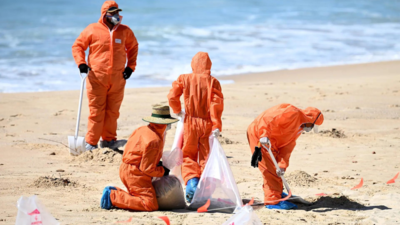
In October, several beaches in Sydney’s eastern suburbs were closed after a mysterious dark spherical object washed ashore, after more balls appeared, authorities took action to close several beaches for safety.
According to Randwick Council, initial reports suggested the balls were tar balls, a hydrocarbon-based pollutant. Australian Marine Conservation Society oil and gas campaign manager Louise Morris said tar balls were blobs of petroleum that had traveled through the ocean and collected debris due to their sticky nature.
But scientists from the University of New South Wales found these objects ‘fatbergs‘, contains a nauseating mixture of sewage, hair, cooking oil, chemicals, fatty compounds, illicit substances and other ingredients.
Associate Professor John Beavs described their smell to 9News as “absolutely disgusting”, worse than any other known smell. These ‘fatbergs’ usually develop in sewage systems when non-dissolved materials accumulate and bind together.
The incident led to the closure of eight Sydney beaches after the strange objects appeared. Randwick City Council initially suspected they were crude oil deposits, possibly as reported by 9News.
The research team noted that although each object had a soft exterior and soft interior, their composition differed slightly.
“This was a significant analytical challenge, with many complex mixtures containing hundreds to thousands of components,” analytical chemistry professor William Alexander Donald told 9News.
“We had a lot of fun analyzing these mysterious blobs, using inferential logic to find the possible source of human waste.”
According to a media statement from the NSW Environmental Protection Authority, the exact source remains uncertain due to the complex composition of the objects and their prolonged exposure to seawater.
The EPA noted that Sydney Water has not confirmed any known problems with the city’s waste management system. While the EPA continues its independent analysis of the material’s composition, the researchers suggest that such contaminants could potentially continue to appear on Sydney’s beaches until the source is identified.